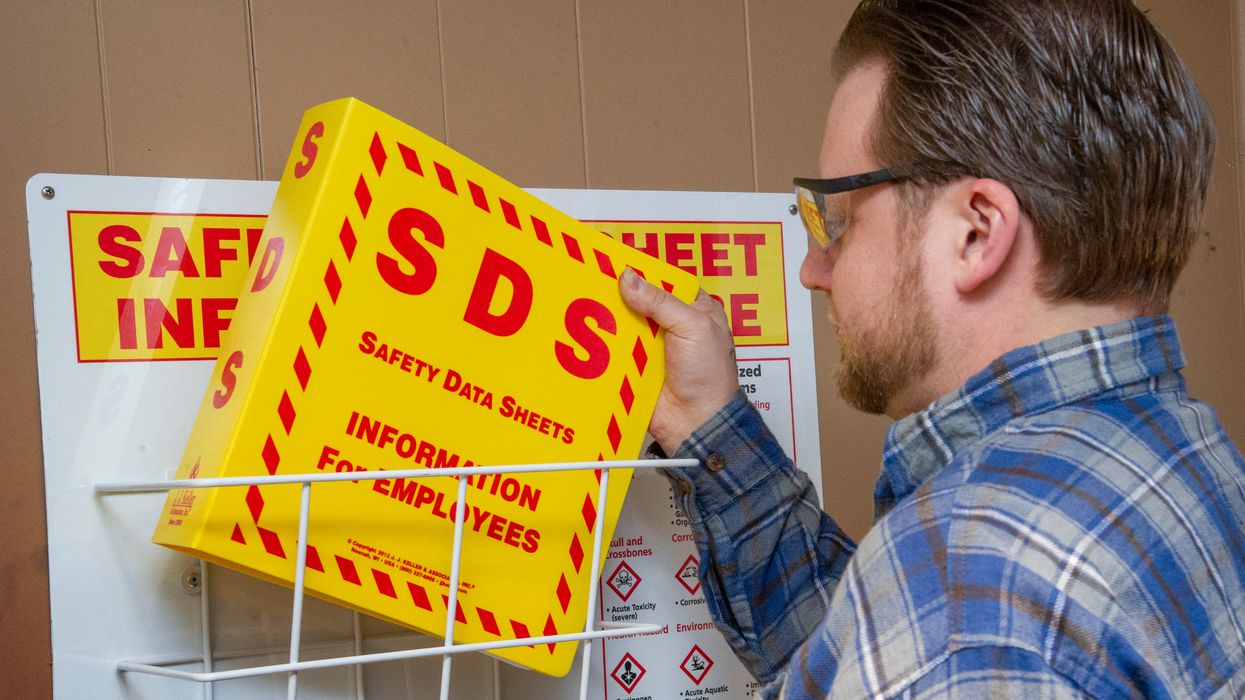Top 5 serious violations for OSHA 29 CFR 1910 Subpart Z point to HazCom
If death or serious physical harm can result from a work hazard and you knew or should have known the hazard exists, OSHA calls it a “serious” violation and can slap your company with a $15,625 penalty for each one. However, one regulation dominated all five of the top serious violations for Subpart Z of 29 CFR 1910 in fiscal year (FY) 2022 — the Hazard Communication (HazCom) Standard at 29 CFR 1910.1200.
According to OSHA, from October 1, 2021, to September 30, 2022, the following subparagraphs were the most frequently cited serious violations for Subpart Z:
| Rank: | 1910.1200: | Description: | Violations in FY2022: |
|---|---|---|---|
| 1 | (e)(1) | Written hazard communication program | 783 |
| 2 | (h)(1) | Employee information and training on hazardous chemicals | 708 |
| 3 | (g)(8) | Maintain safety data sheets (SDSs) and ensure they are readily accessible | 285 |
| 4 | (g)(1) | Have an SDS for each hazardous chemical used | 198 |
| 5 | (e)(1)(i) | Develop, implement, and maintain a list of hazardous chemicals known to be present | 182 |
The first three violations in the table were also in the top 10 frequently cited serious violations for all of 29 CFR 1910 in FY2022. That means when OSHA officers inspect a workplace, there’s a good chance they’ll be looking for HazCom violations, especially those related to the written program, the chemical inventory, SDSs, and training. Let’s take a closer look!
Written program and chemical inventory
According to 1910.1200(e)(1) and (4), if you have employees who are exposed or potentially exposed to non-exempt hazardous chemicals known to be present in their workplaces, you must develop, implement, and maintain at each workplace a written HazCom program that:
- Describes how you will meet the labeling, SDS, and training requirements;
- Includes your chemical inventory;
- Describes how you will inform employees of the hazards of non-routine tasks;
- Describes how you will inform employees of the hazards of chemicals in unlabeled pipes;
- Includes methods you will use to do the following if employees of other employers may be exposed to your hazardous chemicals:
- Provide the other employers onsite access to SDSs;
- Inform the other employers of any precautionary measures needed to protect employees; and
- Inform the other employers of your labeling system if any.
The chemical inventory is simply a list of the hazardous chemicals known to be present using a product identifier that is referenced on the SDS. The list may be compiled for the workplace as a whole or for individual work areas.
Safety data sheets
According to 1910.1200(g)(1):
- Chemical manufacturers and importers shall obtain or develop an SDS for each hazardous chemical they produce or import; and
- Employers shall have an SDS in the workplace for each non-exempt hazardous chemical which they use.
As an employer, you assume no responsibility for the content and accuracy of the SDS provided to you by the manufacturer, importer, or distributor, unless you change the SDS.
Turning to subparagraph (g)(8) to 1910.1200, the regulation says you, the employer, must:
- Maintain in the workplace copies of the required SDSs for each hazardous chemical, and
- Ensure that they are readily accessible during each work shift to employees when they are in their work area(s).
However, the HazCom Standard does not specify how the SDS is to be maintained. Electronic access and other alternatives to maintaining paper copies of the SDSs are permitted, as long as your employees have immediate access to the SDS (or material safety data sheet) in their work area. OSHA directive CPL 02-02-079 adds that for electronic data sheets, employees must be trained on how to access the SDSs, and there is a back up procedure or system in case the electronic system is not functioning.
Training
Subparagraph (h)(1) to 1910.1200 calls for you to provide your employees with effective information and training on non-exempt hazardous chemicals in their work area:
- At the time of their initial assignment, and
- Whenever a new chemical hazard the employees have not previously been trained about is introduced into their work area.
OSHA offers flexibility when it says that Information and training may be designed to cover:
- Categories of hazards (e.g., flammability or carcinogenicity); or
- Specific chemicals.
Moreover, OSHA holds that training must be effective, regardless of the method. Your training should include an opportunity for employees to ask questions to ensure comprehension. Also, if your employees receive job instructions in a language other than English, then the training and information to be conveyed under the HazCom Standard will also need to be conducted in that language.
Key to remember
The HazCom Standard dominated all five of the top serious violations for 29 CFR 1910 Subpart Z last fiscal year. There’s a good chance OSHA officers will continue to look for HazCom violations during future inspections.



















































